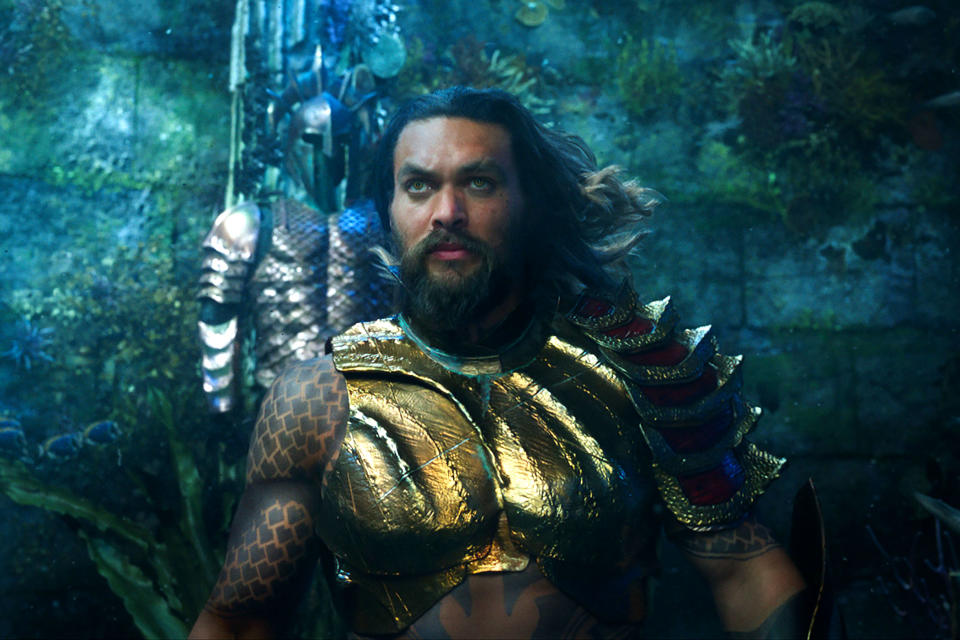How James Wan pulled off Aquaman
A shirtless, wet, towering, glistening Jason Momoa strides through the dim corridor of a hijacked Russian submarine, pummeling villainous pirates, his every Hawaiian punch a tidal wave of cresting muscle and long, black, whip-snap hair. He’s a chiseled boulder rolling over the bad guys, until one foolishly dares to hit him back. Momoa pauses, and gives the pirate an amused look, like: Really? And you brace for what Aquaman does next.
“Were you a little bit surprised?” Momoa asked me later, an amused gleam in his eye.
The actor asked this because he knew — as everybody knew — that Aquaman, a.k.a. Arthur Curry, was still toweling off a few drops of skepticism. Sure, Momoa’s grunge-buff tattooed Aquaman worked in last fall’s Justice League, but it was still unclear if the character could carry his own movie.
For so long Aquaman was, as director James Wan puts it, “the joke of the superhero world — people like to make fun of him.” Hanna-Barbera’s ’70s cartoon Super Friends portrayed the character as an ineffectual seahorse rider chatting with fish. Robot Chicken‘s Justice League skits show Aquaman bullied by the other heroes (“You treat me like I’m not even on the team!” Aquaman whines). There were South Park and Family Guy gags, and that running storyline on Entourage where out-of-work actor Vince begs his agent to find him any role other than starring in an Aquaman movie (“I’d rather do a play than this bulls—!” Vince huffed).
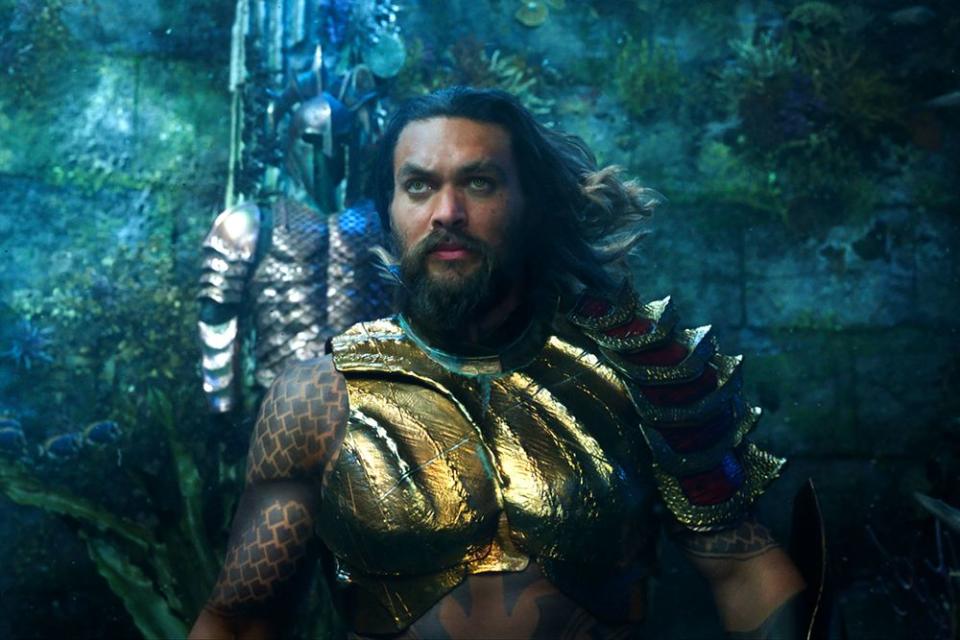
Even through all that, Aquaman was destined to hit the big screen. Introduced in 1941 as an oceanic superhero battling Nazi U-boat officers, Arthur Curry is one of only a handful of DC golden-age characters to maintain a continual presence in print (the others are Superman, Batman, Robin, and Wonder Woman). “His viability comes from the backdrop of the world he’s in — the underwater world — and the fact he’s so ingrained in people’s heads,” says Aquaman executive producer Geoff Johns.
Yet the character wasn’t on Momoa’s mind when he met with director Zack Snyder in 2013 to audition for the role of Batman in Batman v Superman: Dawn of Justice. The half-Hawaiian former Game of Thrones star was seeking his next gig, but had been so convincing in the part of stoic horse lord Khal Drogo on the HBO hit that he was still meeting producers who didn’t realize he spoke English (as if Dothraki were somehow his native language). Momoa almost canceled on Snyder because he was so skeptical about his odds.
“I’m not a white guy, I ain’t playing Batman,” Momoa remembers thinking. “That’s like an American playing Bond.” So Momoa read the Caped Crusader’s lines like a jaded smart-ass. “And that’s when Zack was like, ‘I have an idea.'” Momoa was stunned when Snyder said the character’s name. “I’m like, ‘Blond? Orange shirt and green tights? Is this a joke?'”
Wan, who was in talks to direct Aquaman at the time, was thrown by the casting of Momoa too — at least at first. “After sleeping on it for a while, it hit me that was such a brilliant move,” Wan says. “If there’s a superhero that most people like to make fun of, the sheer fact you have Jason Momoa [playing him] — the jokiness goes right out the window.”
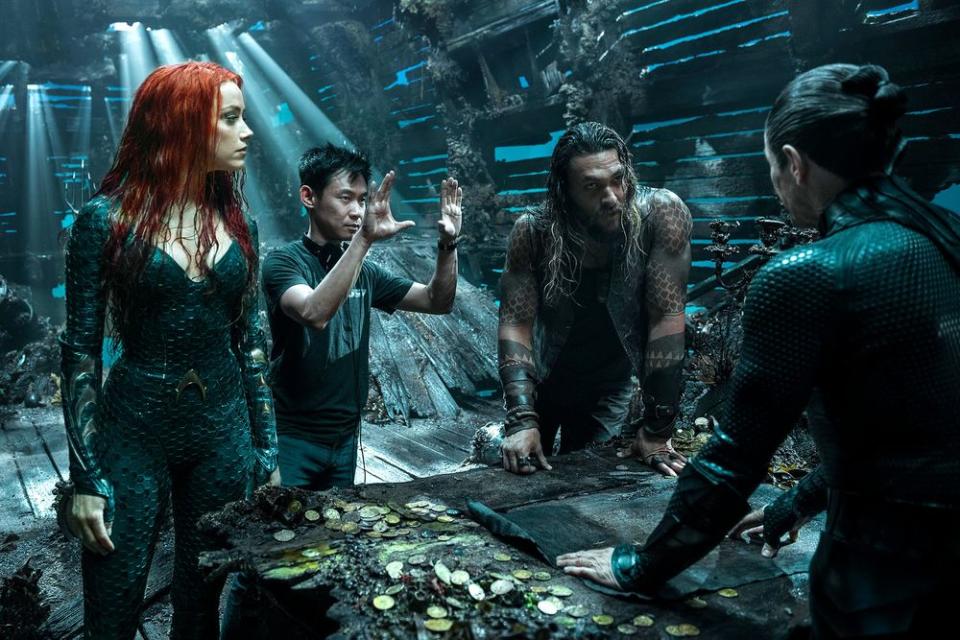
Momoa’s striking appearance in 2016’s Batman v Superman was brief, but enough to get fans thinking about Aquaman in a new way. While 2017’s Justice League was considered a disappointment ($657 million at the global box office is a lot until you compare it to Avengers: Infinity War making the same amount worldwide in only six days), fans agreed that Aquaman managed to stay afloat. Momoa worries that he came off “too grumpy” in League, and there’s a line he wishes had been cut: Batman making that tired joke about Aquaman talking to fish. “I’m like, ‘Don’t put this line in there, because that’s all people are going to say,'” Momoa recalls. “Do you want me to make him cool or not?”
For the stand-alone, Warner Bros. looked to Wan, who had successfully transitioned from horror films like The Conjuring and Insidious to the massive Fast and Furious franchise. When the director met Momoa in 2015, he was moved by the actor’s backstory. Raised by a single mom who worked two jobs, Momoa was enrolled in school early, then felt bullied and ostracized — a multiracial kid, always the youngest in his class, first living in Hawaii and later in Iowa. “I didn’t fit in either world,” Momoa, 38, says. He felt, in other words, like a fish out of water — just like the half-human, half-Atlantean Curry. “Seeing how it was for Jason growing up, being not quite sure how to fit in,” Wan says, “that was the story I wanted to tell.”
The film opens with Curry living in a small coastal town in Maine, the son of absent Queen Atlanna (Nicole Kidman) and a human father (Temuera Morrison). He prefers to hang out in a bar than be a hero, but he’s called to action by a visit from Mera (Amber Heard) when the fate of the underwater world of Atlantis is threatened by Curry’s half-brother King Orm (Patrick Wilson), who has his sights set on declaring war on the surface world. There’s also a human mercenary who takes on the name Black Manta (Yahya Abdul-Mateen II), plus battle scenes with Atlanteans riding sharks and sea dragons, and one unnerving sequence featuring subterranean cannibals that will remind Wan fans of his horror roots.
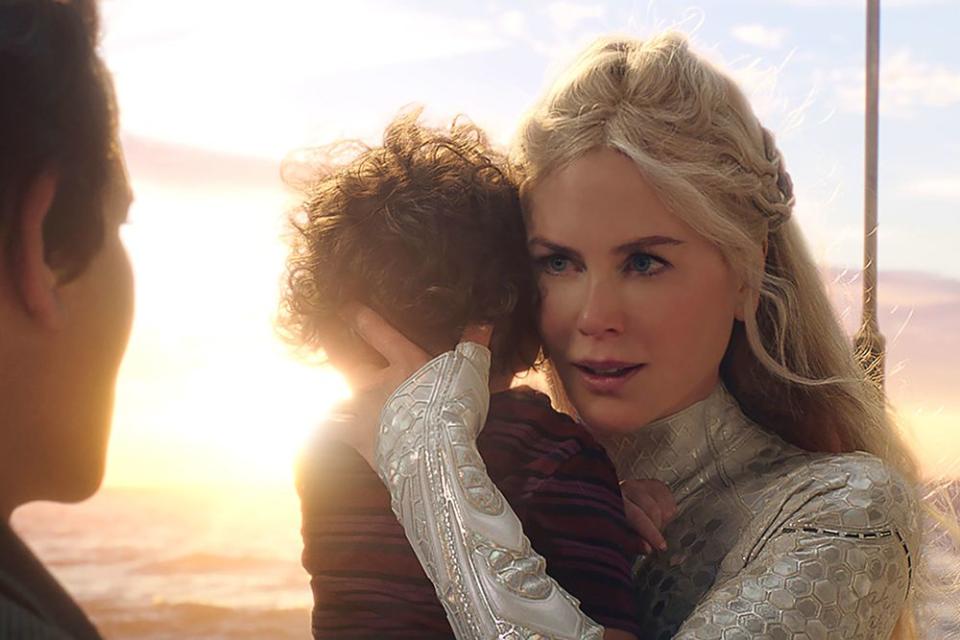
The most striking elements are the film’s wildly fantastical underwater world (don’t tell anyone, but Wan considers Aquaman a fantasy film, not a superhero movie) and a tone that’s an upbeat shift from the grimness of Snyder’s DC films. There’s a lot of humor, mostly from Momoa showcasing his boisterous real-life personality that’s unlike his glowering tough-guy roles.
“You always know where Jason is — you hear loud rock & roll, a booming voice, people laughing, and something breaking or falling,” Heard says. “He’d make the worst ninja ever.”
Costar Kidman concurs: “He’s just biiiiiig,” she says. “He’s hugely charismatic, you can see why he has this fan base, and he’s got the best hair.” The actor even ad-libbed jokes during filming, and was later shocked at how many Wan kept.
Wan wasn’t shy about using Momoa’s most obvious attributes either. Asked if we’ll see Curry in his iconic green-and-orange costume, Wan ducked the question by saying the actor mostly dons “a suit”: “His birthday suit — he’s shirtless a lot. Why would I want to put him in any costumes when he looks incredible without costumes?”
As for Heard, the actress was drawn to playing Aquaman’s formidable love interest Mera after meeting with Snyder. “I’m allergic to being the damsel, the two-dimensional archetype of what women are often limited to in this industry, especially in the superhero world,” she says. “Zack got me at ‘warrior queen.’ He said, ‘You get a sword and a crown,’ and I’m like, ‘Okay.'”
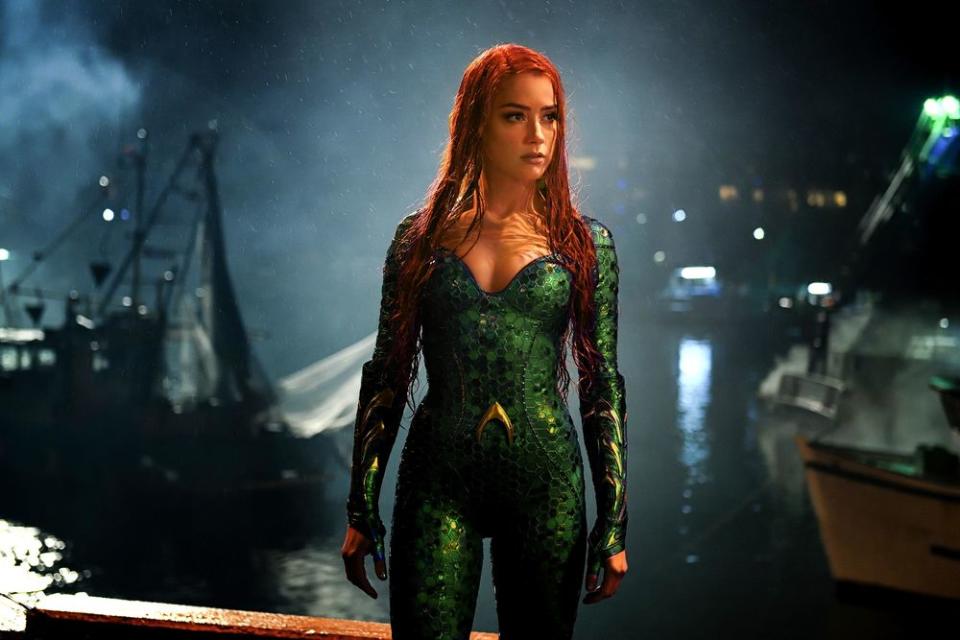
And this time, Mera is “not just making bubbles,” Heard quips, referring to a Justice League scene where her character created an underwater air pocket to have a chat with Aquaman. A tsunami of fans flipped over that scene and have wondered how Wan will handle underwater dialogue differently ever since he teased that he was ditching the air bubbles. His solution is insanely simple. “People are overthinking it; they’re just gonna talk!” Wan reveals.
Still, acting like you’re submerged all day, every day, was tough on the cast. Actors had to dangle on wires in front of a greenscreen as if in the deep blue sea for weeks. “It’s trying to pretend you’re under the ocean in an epic battle while attached to wires, sopping wet after being hosed down on a cold soundstage for 16 hours a day while holding a plank,” Heard says. “It was a fantastic core workout.”
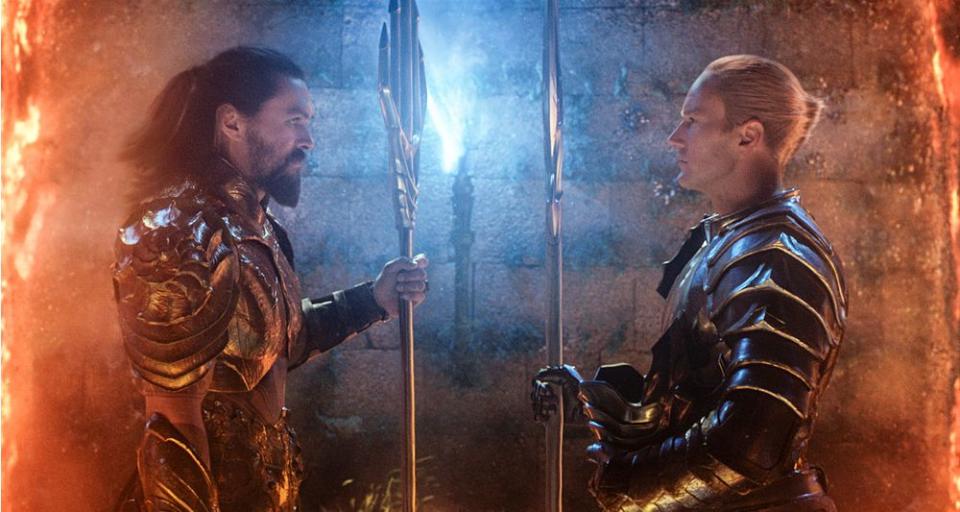
Wilson had a ton of wire time too, as Aquaman’s nemesis Orm. His goal is familiar (world domination, of course), yet the character has an altruistic motive that would get a thumbs-up from Thanos: “He’s kind of an eco-warrior,” says Wilson. “He’s got a very clear gripe with the surface world, which has been polluting his oceans for centuries.”
Then there’s Aquaman’s other rival: Black Manta, a modern-day pirate who harbors a grudge against Curry. “He’s very intelligent, he’s annoyingly tenacious, and has a lot of emotional depth as well,” says Abdul-Mateen. “He doesn’t have superpowers, which is fun to play with — everything is real and tangible — and it makes him vulnerable, so he always has to be on top of his game.” Manta uses Atlantean technology to create an insectlike supersuit where he shoots red plasma beams from his eyes.
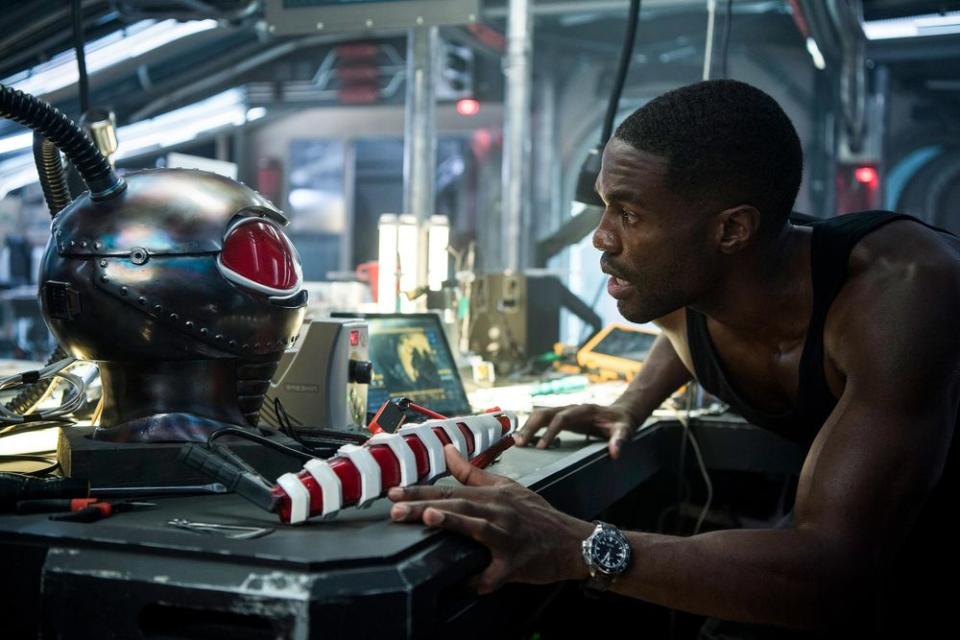
Taken all together, Aquaman, which splashes down on the big screen Dec. 21, is perhaps the wildest-looking superhero tale since Guardians of the Galaxy—and that certainly worked out okay for Marvel. The folks at DC are very ready for a big win and suspect this is it. Warner Bros. film group chairman Toby Emmerich calls Aquaman a “bridge movie” in the studio’s DC Universe strategy that includes 2019’s Wonder Woman sequel, a Todd Phillips Joker stand-alone starting production this fall and a Shazam! movie in April. “It’s important that [Aquaman] works,” Emmerich says candidly. “And the good movies work better, you can’t hide the bacon anymore.”
Aquaman, he explains, has a not-so-secret weapon, something none of the previous DC or Marvel movies have had. “You think of how much superhero content there is in theaters and television, it’s hard to go to someplace you haven’t been before — but the underwater world is fresh and different,” Emmerich says. “I think Aquaman worked as a gag in Entourage, but I know it works as a movie.”
You know, everyone always forgets how that Entourage storyline ended: Aquaman blows away all expectations and becomes a massive hit.
Listen to Pitbull’s take on Toto’s ‘Africa’ from Aquaman soundtrack
